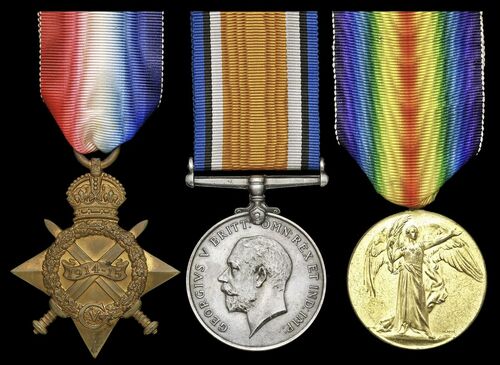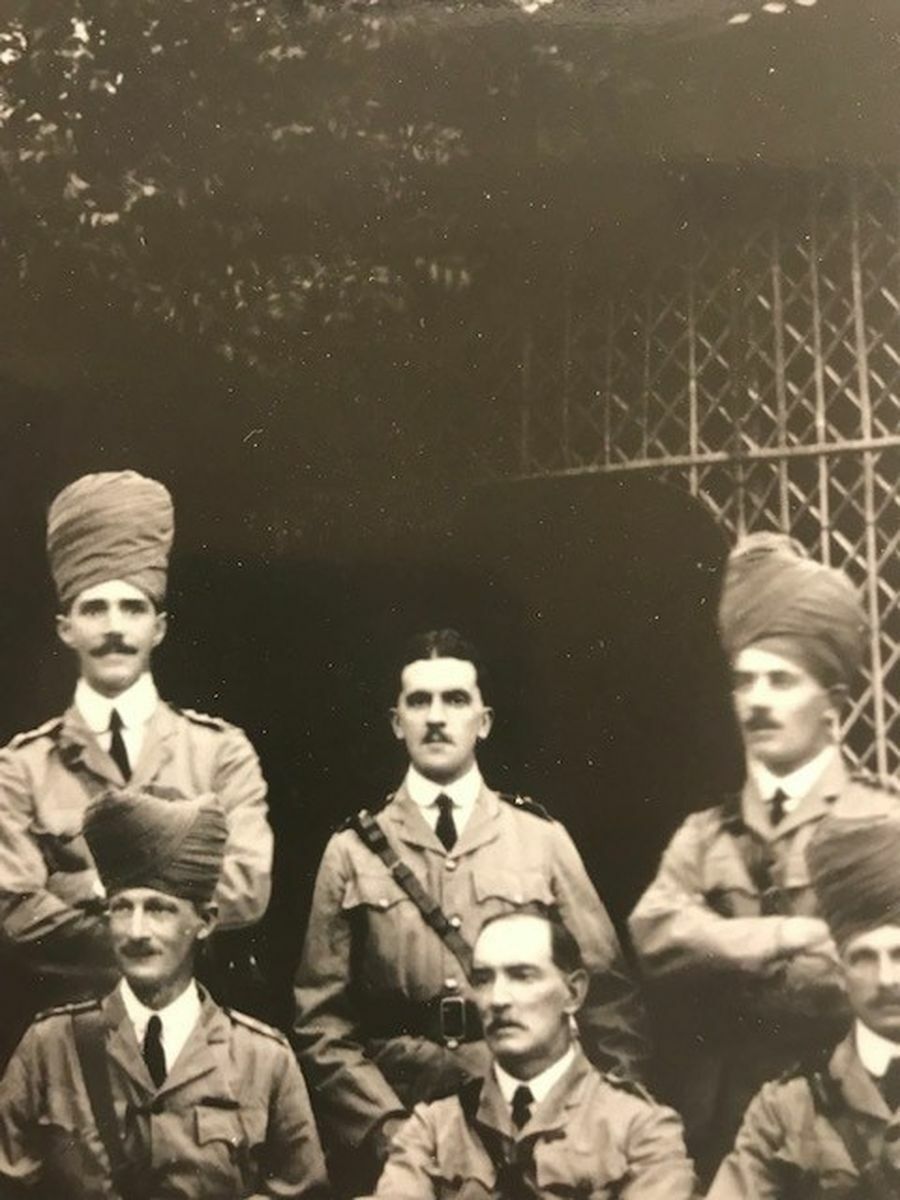Auction: 23003 - Orders, Decorations and Medals
Lot: 93
The campaign group of three to Lieutenant J. G. Fagan, 119th Infantry, Indian Army, who died of wounds at the Battle of Ctesiphonon on 22 November 1915
1914-15 Star (Lieut. J. G. Fagan. 119/Inf.); British War and Victory Medals (Capt. J. G. Fagan.), good very fine (3)
Jasper Gilbert Fagan was born at Bombay on 9 June 1889, the son of Major-General Joseph Fagan, Indian Army. Privately educated, he later attended the Royal Military College Sandhurst, passing out in 1908. Having been commissioned into the East Surrey Regiment on 6 February 1909, he was posted to India on 20 September.
Here Fagan served with his Battalion, appearing in the 1911 census with them as a Lieutenant with the 2nd Battalion. Joining the 119th Infantry (Mooltan Regiment), Indian Army he was still serving with this unit on the outbreak of the Great War. Entering the war in Mesopotamia with this unit he was to see action in the initial advance on Baghdad which culminated in the Battle of Ctesiphon. At the time of the action Fagan was serving as an Acting Captain.
The diary of Lieutenant Birch-Reynardson describes the action stating:
'November 22nd - Fell in at 6 a.m., and marched at 6.20. Heavy guns opened at 7, before sunrise. A gorgeous orange sky.
8.30 a.m.- We have halted, and I have the mules in a nullah, under cover, just in rear of S Company (Forrest's). Ctesiphon Arch is 2,500 yards by the range-finders - a wonderful ruin of tremendous size. There has been no sign or sight of the enemy, and, according to map, we ought to be already in their first-line trenches. The map must be wrong.
9 a.m.- The guns have ceased fire. We are going to advance in two lines of half-companies in fours. Machine-gun Section to follow in rear of S Company. Q and P Companies in first line; S and R in second line; 100 yard interval, and 450 yards distance.
We advanced, for about 1,000 yards, over ground intersected by small nullahs some two or three feet deep. As, I should think, about 9.45am the enemy made his first sign by firing two groups of three shots each from a machine-gun on our left flank. This appeared to be the curtain-raiser, and soon afterwards shells began to arrive.
The 17th Brigade was quickly deployed, and luckily found some cover in a long ditch running parallel to the enemy's trenches, which were only about 400 yards in front of the Arch, instead of over a mile (according to the aeroplane map). From the ditches in which we were the range to the Arch was 1,200 yards.
Just to the left (S.W.) of the Arch we could see the entanglements in front of the redoubt, and thence a trench appeared to run to some high mounds or banks. Here were two machine-guns, and on the top of the mounds was a tin-roofed blockhouse or observation post.
We remained in this position for about an hour, or perhaps less, replying to the enemy's fire, from which we suffered very few casualties, though his shrapnel fire soon increased in volume and, by degrees, in accuracy. I heard afterwards that our guns could see nothing at this stage, because of a hopeless mirage.
The brigade now got sudden orders to advance at right angles to its exisitng position, towards the work on the left of the enemy's position- the "vital point" - in front of which the force detailed for its capture was hung up and in urgent need of reinforcement.
This meant a march right across the enemy's front at a distance of not more than 1,000 yards. It was an opportunity for the Turks, and they took it. Every available gun, machine-gun, and rifle was turned on to the ground over which the 17th Brigade marches. It was absolutely open and devoid of cover, and, consequently, the losses were very heavy indeed. But the steadiness of the advance was wonderful. The 22nd Punjabis and the 119th Infantry were particularly noticeable in the way in which they went ahead, as if nothing out of the common was happening - and it was trying work, as it was not a case of an existing charge, but just a march across as open, bullet-swept plain.
Some 200 yards from the enemy's trenches south of V.P. (the "vital point") was a shallow ditch or irrigation channel, and this was reached by the survivors of the Brigade at about 12.30p.m.'
Fagan was mortally wounded at Ctesiphon on 22 November 1915 and is commemorated on the Basra Memorial, Iraq; sold together with copies of a photograph of a memorial to him at the Highland Road Cemetery, Highland Road, Portsmouth, Hampshire, and an entry from the London Gazette confirming he died of wounds.
Subject to 20% VAT on Buyer’s Premium. For more information please view Terms and Conditions for Buyers.
Sold for
£320
Starting price
£240







